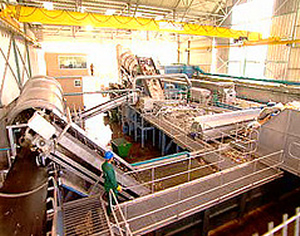- 4 reads

Community-based renewable energy projects in Vermont, Wisconsin, Colorado and California were granted over $20 million from the U.S. Department of Energy on Jan. 21, which matches $167 million in local government and private sector funding.
The five community projects involve generating energy from biomass, wind power, solar energy and biogas and are expected to create enough energy to displace the equivalent of emissions from 10,000 homes. DOE views projects like these at the community level as essential components of the nation’s energy portfolio.
Smaller, more localized renewable energy projects will serve as models for small government, campuses or small utilities to design other projects specific to their energy demands, DOE says.
The City of Montpelier, Vt., will use the funding to install a combined heat and power (CHP) district energy system running on locally-sourced renewable and sustainably-harvested wood chips. The energy generated from the CHP system will heat 176 buildings, including the Vermont Capitol Complex, city schools, City Hall and numerous buildings in the downtown district.
With the new funding, the Forest County Potawatomi Tribe in Wisconsin will see its goal through of replacing natural gas and propane as the main source of running the Tribe's governmental buildings by installing a biomass combined heat and power facility that will provide heating, cooling, and electricity, and a biogas digester, generation facility, three 100 kW wind turbines and three solar panels.
In Holyoke, Colo., Phillips County will put its share towards a community-owned 30 MW wind energy project as the foundation of eventually constructing a 650MW wind farm within three counties in Northeastern Colorado. Part of the plan is to allow the local economy to benefit by sharing the project's revenues with local landowners and other project participants, creating jobs, and providing clean renewable energy for the area's primary communities.
In Sacramento, Calif., the Sacramento Municipal Utility District (SMUD) intends to install California’s first-ever two-mile "Solar Highway," a co-digestion process of fats, oil, and grease (FOG) and liquid food processing waste with sewage to produce biogas, and two low-NOx anaerobic digesters fed by two dairy facilities.
University of California at Davis will put its plan into motion to construct a Waste-to-Renewable Energy (WTRE) system to generate power from a renewable biogas fed fuel cell. Within this system, organic waste will be digested and subjected to methanogenic bacteria that will produce gases such as methane, carbon dioxide and hydrogen sulfide. Hydrogen sulfide and carbon dioxide will be extracted, leaving gas for use in a fuel cell system. The entire energy plan includes an advanced storage battery and fuel cell that will be fueled by the on-site biogas and provide electricity to West Village consumers.

